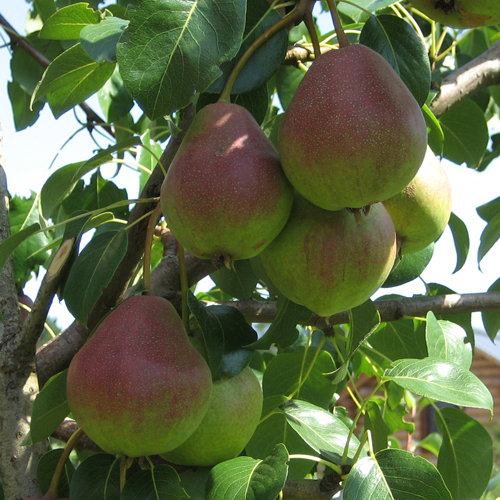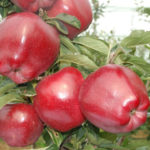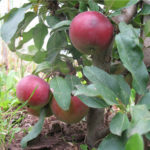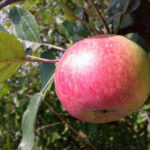Pear variety Vernaya
Among the popular fruit trees, the pear takes a special place. And if earlier the culture was considered thermophilic, nowadays many varieties have been created that are grown in cool climates. Some of them have a long history, so it's safe to say that they have stood the test of time. For example, the pear is Faithful. It was created in 1958 by crossing the interspecific hybrid No. 3 and the old Belgian variety Josephine Mechelnaya. The work was carried out at the All-Russian Institute of Selection and Technology of Horticulture and Nursery. Authorship belongs to Yu.A. Petrov and N.V. Efimova. The date of filing an application for registration in the State Register of Plants of the Russian Federation is 1998. In 2001, the variety was included. The admission region is Central, including the Moscow, Bryansk, Vladimir, Kaluga, Ryazan, Ivanovo, Smolensk and Tula regions.
Description
A medium-sized tree, covered with a medium thickened drooping crown of irregular shape. The close-to-right angle of departure of the skeletal branches from the trunk, which is almost 90 °, ensures reliable fastening. The main branches of the variety are curved, compactly located, their ends are directed upward and to the sides. The stem and branches of Vernaya are covered with smooth brown bark.

During the growing season, young shoots of pears have time to grow to an average length. In cross-section, they are rounded, covered with red-brown bark. There are no traces of pubescence. The kidneys are round-conical, smooth. Ovate green leaves are of normal size; leaf venation is reticulate and coarse. The surface of the plate is smooth, slightly shiny. The edge is finely serrated. The sheet is curved upward. The petiole is of regular length, thin, not pubescent. Generative, or flowering, bud is smooth, elongated, of medium size. Flowers are small, chalky, small, white. The petals are medium, rounded. During flowering, the tree exudes a delicate aroma. Fruiting of the variety occurs mainly on simple and complex ringlets, spurs, fruit bags and spears.
The shape of the fruits of Vernaya is pear-shaped, slightly sloping, the surface is even. The usual weight is 100 - 140 grams. The skin is dry, slightly glossy. At the stage of technical ripeness, the fruit is green. The main color of a ripe pear is greenish-yellowish. But on a smaller part of the fruit, there is a cover color in the form of a light tan. The subcutaneous points are few in number, gray in color, of medium size, hardly noticeable. The appearance is estimated at 4.2 points. The funnel is very small, almost absent, blunt-conical. The cup is half-open. The saucer is wide, shallow, smooth. Elliptical heart, regular size. The sub-cup tube is cupped, medium in length and width. The peduncle is thick, short, oblique.
The pulp is quite dense, tender, fine-grained, semi-oily, very juicy, with a weak aroma. Nice cream color. The taste is intense, sweet and sour. 100 grams of pulp contains 10.1% sugars and 0.15% acids. Assessment of tasters - 4.4 points. Seed chambers are closed, small. Seeds are conical, medium-sized, dark brown.
Variety characteristics
- During the fruiting period, Vernaya enters 3 to 4 years after planting, which is a sign of early maturity;
- in terms of ripening, the pear is late autumn. In Moscow, removable maturity occurs in the period from mid-September to early October;
- the yield is high - over the five-year period of state tests it was 232 c / ha. According to some reports, up to 40 kg of juicy fruits can be harvested from one tree;
- winter hardiness in the declared region is excellent, at the level Seedless... The ovary is resistant to frost at -2 ° C;
- high immunity, especially gardeners are pleased with the resistance to scab;
- in the refrigerator, fruits remain fresh for two months;
- the transportability of Vernaya's fruits is also high;
- pears can be used in their natural form and recycled. For the winter, you can prepare a lot of tasty and healthy things from them - compotes, preserves, jams, marmalade.
Pollinators
The variety is self-fertile, therefore, even without a pollinator, it will be able to form a crop. But to improve its quality, you can drop off Lyra, Yakovlev's Lyubimitsa or Chizhovskaya.
Planting and leaving
Disembarkation can be carried out in spring and autumn. A well-lit place for a pear should be selected. The variety is not picky about soils, but it adapts faster and grows well on light and fertile loams. Since Vernaya is prone to periodic fruiting, the crop load must be rationed annually.
Tree maintenance is simple. Watering is carried out as needed, without missing an important moment in late July - early August, when, simultaneously with the pouring harvest of this year, flower buds are laid for the next year. They begin to feed the plant in the second year after planting. Be sure to carry out pruning.
Faithful is a reliable variety that can provide a good harvest with minimal maintenance. Scab resistance is another important plus. But the yield will have to be rationed. Every spring, it is necessary to carry out thinning pruning, which allows the sun to uniformly illuminate the crown.









I grew a pear, bought it as "faithful". The fruits are shit. While hanging on a tree, not tasty, very astringent, you immediately start to hiccup. Then they begin to soften and fall. I think I raised it in vain, I will harvest the pear. It's a pity for the wasted time. I recommend "August Dew", very tasty fruits.
I fully agree with your feedback. The pear was planted in 2014. The harvest is decent this year, the branches bent to the ground from weight. I never imagined that there could be such a terrible taste of the fruit. Let's cut it out unambiguously.